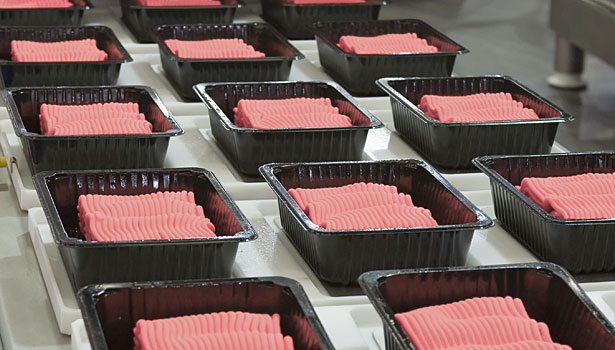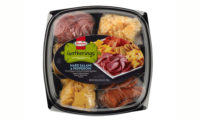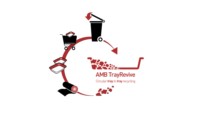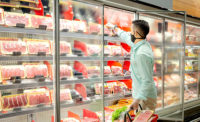When given a choice between a product in a flexible package and one in a sealed thermoformed tray, consumers are more likely to buy the trayed product, according to a study by Package InSight, LLC. The study, commissioned by film converter Klöckner Pentaplast of America, Inc., was conducted at Clemson University’s CUshop, a research lab with customized shopping environments and eye-tracking technology.
In the study, sales of product in the trayed package were 44 percent higher. Although the subject product was sliced cheese, Christopher Findley, director of Marketing at Klöckner Pentaplast, believe the results would extend to lunch meat. Not only did consumers see the trayed package more quickly, but they also looked at it longer. A majority of study participants also rated the product in the thermoformed package to be of higher quality (75 percent), easier to open (65.5 percent) and more hygienic (56 percent). In addition, 42 percent noted they were troubled by glare from the flexible packaging. The popularity of tray packaging for meat, poultry and seafood products has prompted developments that maximize shelf impact and functionality and support sustainability and food-safety initiatives.
Sometimes increasing shelf impact is as simple as changing a color. For example, two retail chains in Poland — Lidl and Biedronka — rely on different colors of polypropylene (PP) and polyethylene terephthalate (PET)/polyethylene (PE) trays to encourage sales of poultry and red meat products, and extend their shelf life. In the two-layer tray structure, the PET enhances rigidity and durability while the PE ensures a hermetic seal.
Fiber-based materials provide a renewable option to trays made of expanded polystyrene (EPS) foam, a material many consider to be a less sustainable choice. Fiber-based trays tend to be less brittle than EPS foam and can be specified in several colors. Available structures include a two-layer, highly sized coated paperboard and a three-layer vegetable parchment/kraft paperboard/polylactic acid (PLA) nonwoven lamination. The PLA layer enhances wet strength and moisture resistance. Formed in molds, the three-layer material can be watermarked and is compatible with freezer, refrigerator and oven conditions.
Another sustainable tray option consists of 95 percent recycled PET. A special sealant on the tray flange does not affect the recyclability of the tray but does permit the lidstock to be downgauged since it eliminates the need for the PE layer typically required for sealing. Another environmental advantage is a lower sealing temperature and accompanying reduction in energy usage.
To enhance food safety, an antimicrobial additive can be blended with the resin used to make trays and lidstock. The additive virtually eliminates the growth of any pathogens present on package surfaces, but does not affect tray or lidstock performance or the organoleptic attributes of the product.
A recent lidstock innovation, a dual-ovenable, solvent-free polyester, seals to virtually any tray material. Another lidstock possibility is an easy-open/reclose design compatible with gas flush, vacuum packaging and high-pressure pasteurization. A tabbed pressure-sensitive label is the key to the easy opening and reclosure. Pulling the tab removes a scored portion of lidstock and opens the pack as the label peels back. Pressing the label back in place recloses the pack.





Report Abusive Comment